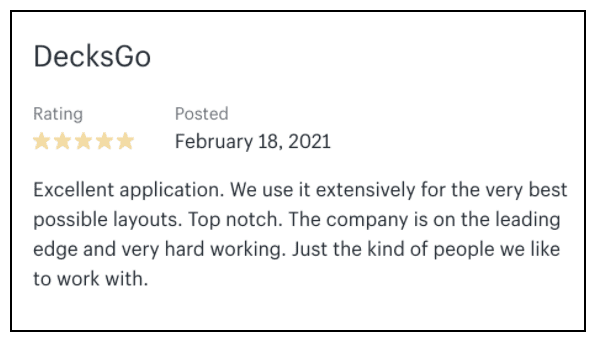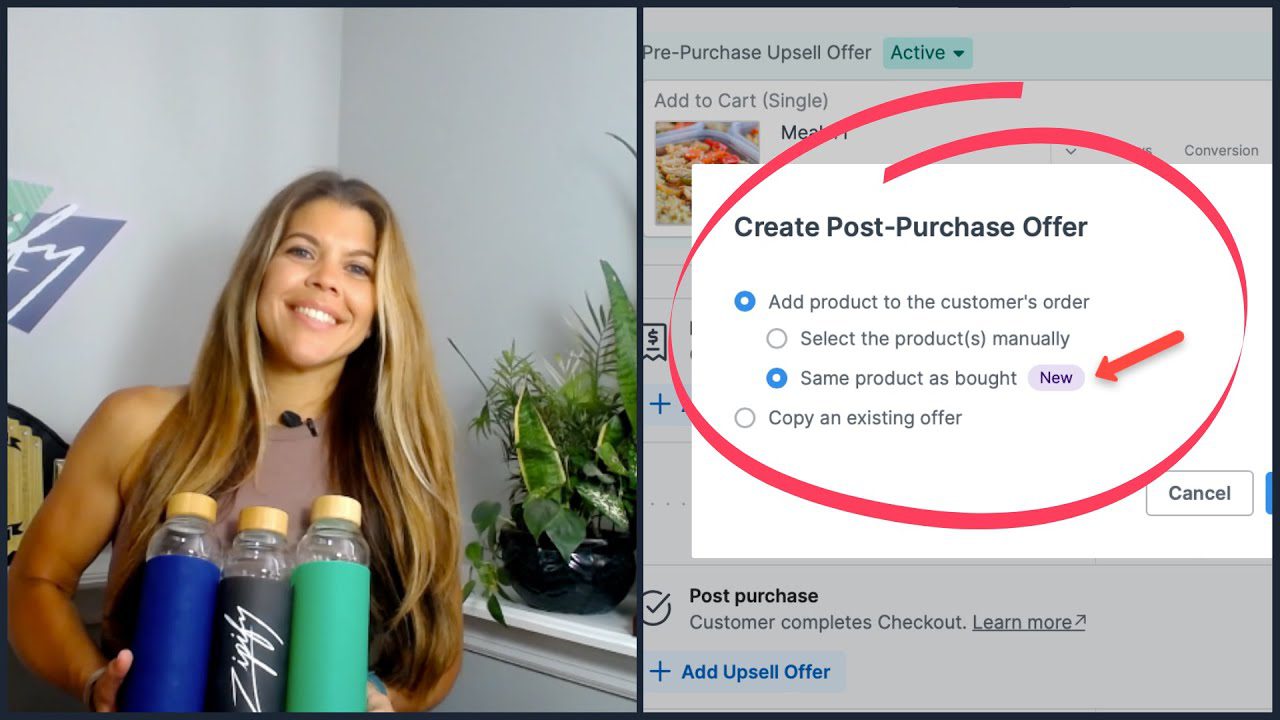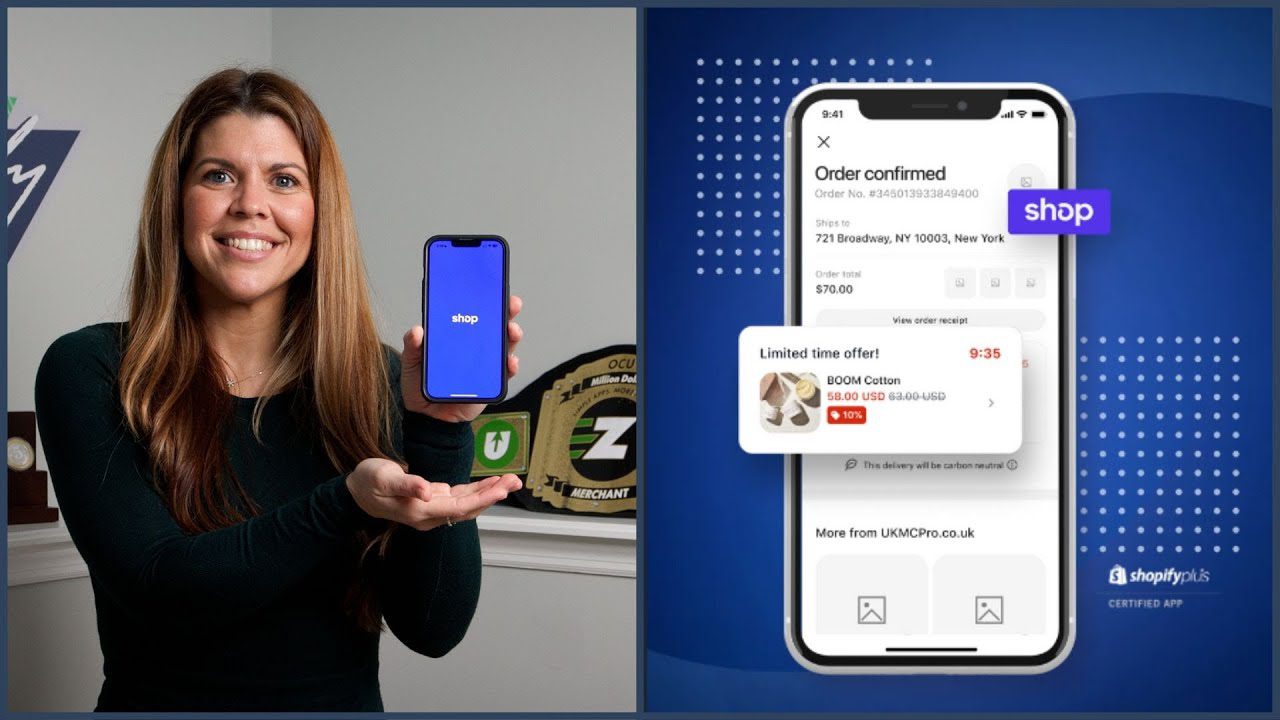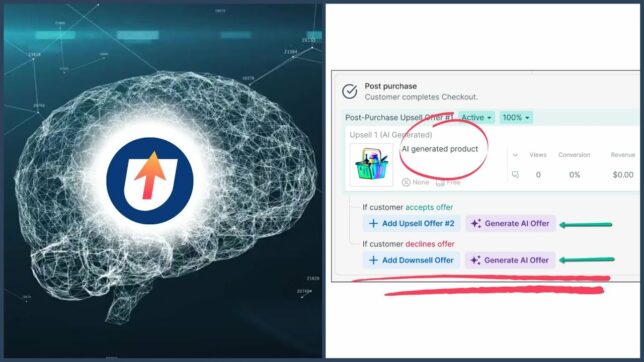When I first got started as an entrepreneur, I learned that to be the CEO of a company you have to be a little crazy.
The role comes with so much pressure and responsibility — it’s definitely not for everybody!
But in the process of running my own brands for 15 years and building a $100 million Shopify store…
I went from basically winging it as a CEO to using a methodical leadership strategy that helps all of my businesses thrive (and helps me sleep at night).
In this blog post, you will learn:
- The true skillset of a CEO, and why it’s okay to be a generalist
- The 6-Part CEO System I use to run every one of my companies
- How I get high-level talent banging down my door asking to come work for me
- The company culture I used to build an enthusiastic team
Confessions of a CEO: “What Would I Do if I Lost My Company?”
Mark, a member of my Blue Ribbon Mastermind, was vulnerable enough to share this comment with the group:

For the record, the analogy I like to use is that the CEO should be the one navigating, (not driving) to make sure the company is going in the right direction.
That said, this is a really interesting topic, so before I get into my Leadership System I want to share my response to Mark. I think it’s really valuable for anyone who is a CEO or who might want to be a CEO one day.
You Are What You Produce?
An interesting thing happens when you have a successful production cycle: you start to associate your identity with it.
In your case, Mark, your business is doing well, so you might start identifying as “the successful entrepreneur”. You might start hanging out with other successful entrepreneurs and talking about the successful entrepreneur life.
It becomes a part of who you are.
They’ve done tests where they compare the brain activity of a mother looking at her baby to the brain activity of a business owner looking at their brand logo, and the brains are lit up in the same spots.
This is the same reason why business brokers say most owners overvalue their brands: they’re emotionally attached to them.
And when your business becomes part of your identity, it can be scary to ask yourself, “What would I do if this thing were to go away?” You start to wonder, “Did I get lucky? Could I repeat this success?”

Everyone goes through a phase where they ask themselves these questions.
In my opinion, it’s a waste of time to live in fear of a future reality that doesn’t. But hey, it’s worth confronting the possibility. So, what would you do?
First of all, you’d do just fine. You’ve done all that stuff once before, and you can do it all again if you had to. You could learn all that stuff again.
But the good news is, you won’t have to start from scratch unless you sell your business or unless you tank it. You’re in Blue Ribbon, so you’re unlikely to tank it, and if you do sell it you won’t be starting from scratch because you’ll have some money to start a new project.
You would also be starting with an important skillset that you might be undervaluing.
The True Skillset of a CEO
A CEO’s skillset is being able to see the big picture, being able to see how everything fits together and direct the processes.
A CEO can also handle the responsibility. Being the end of the line for the entire operation is not something most people want, and it’s not a fit for most personality types. It’s very intense to be accountable for everyone’s salaries, for the success or failure of the company, for the overhead, for risk and liability — for all of it.
Which is why that role has the biggest upside, because it also has the biggest downside. It’s the most volatile and emotionally intense and stressful, but when things go well it has a big payoff.
Play the Role that Only You Can Play
Mark, you’ve gone from a do-it-yourself entrepreneur to the leader of a team; you’ve built systems and processes and infrastructure. You know how to collect the resources you needs and how to use them to achieve your goals.
Don’t be scared if you’re not as technically sound as you once were.
Laura, my Social Media Director, is way better at social than I ever was. But she still relies on me for feedback, strategy, guidance and accountability. My role is to help her be better at her job, not to do the job myself.
So, what would you do if you had to start over?
If you wanted to, you could go back to running the Facebook ads, writing the copy, and building out the tech stack. You’re smart, you’re capable, and most importantly you have the willingness to put your attention consistently in a particular area over time.
You could do this, but you don’t want to. It’s actually the antithesis of your goal, which is to put your time and energy to their best possible use.

Need a skilled Facebook advertiser? Hire one, train one. What you want to do is play the role that only you can play — and we’re going to talk about this in a second — which is to give your team a place where they can have fun, grow their skillsets and contribute to something meaningful.
Okay, that wraps up my response to Mark. I hope you found it helpful!
My CEO System: How I Run My Companies
Now that we’ve covered the importance of a CEO’s role and its relation to other roles in the company, I want to show you the system I use to run my companies.
You’re about to get a glimpse into my operations at the highest level.
Imagine you’re a hawk looking down 30,000 feet at my company. This is big picture stuff.
And if this system sits in balance, then your business will thrive.

When in balance, this system will take the input on the left — history, vision, mission, values, market forces, etc. — and turn it into the desirable output on the right — sales, profit, and longevity.
When out of balance, the output becomes low sales and profit, high turnover among your team, and increased customer acquisition costs.
What comes out depends on what goes in.
So let’s start at the top with Strategy and Executive Leadership.
Strategy & Executive Leadership: Your Long-term Plays
Your strategy is your one-year and five-year value creation plan. How are you going to continuously create great stuff that your audience will love?
Ideally, your strategy does not change very much. If you’re strategy is changing on a monthly basis, something is wrong.
Your executive leadership shouldn’t change very much, either.

In my case, Pepijn is my CTO and President, Colleen is my COO, and Boris is my CMO. If any of these people leave before I’m done with BOOM! (i.e., when I sell it to a strategic partner) then something is wrong.
It’s one thing if they leave for personal reasons, but if they leave because of an issue with one of the categories from this chart, then something is wrong.
Ideally, you’re not having turnover in strategy but once a year, and you’re not having turnover in executive leadership unless you’re adding members. They’re both long-term plays.
Also, the executive leadership dictates strategy. You be meeting with your executive team once a quarter to evaluate how well you’re executing the strategy plan, but ideally not much changes in the big vision strategy.
Critical Tasks: What Needs to Get Done?
Critical tasks are anything we need to do in a given department, the core processes.
For Laura’s department those are the emails that go out and when, why and to whom; the sales that happen and when, why and to whom; the social media content that goes out and when, why and to whom.

So for example, we would look at this department and ask, “Are we doing everything we need to be doing to be successful in email marketing? What’s coming down the pipeline in advertising that might cause us to modify our strategy (i.e., iOS 14, Google removing cookies, etc.)?”
Another example: Now that we’ve expanded onto Amazon, are there any tasks or processes that we didn’t have before that we need now, like Amazon-specific customer support or Amazon-specific supply chain management?
Critical tasks should be looked at weekly and monthly, the same as formal organization.
Formal Organization: Who’s Going to Do It?
If your critical tasks are the stuff you’re doing, then your formal organization is the way you’re organized to do it.
For example, we have the critical task of establishing a fulfillment network in Europe. That means we need to expand our formal organization by having somebody available for live chat to provide customer service to that area.

Anytime we set specific tasks for specific departments, we look to the organization and we ask, “Who’s currently doing that? Are they doing a good job? Are they happy with that task? Do we need anyone else to do it, and do we have SOPs to use for training?”
You have to be looking at your organization as you’re adding and modifying your critical tasks for each dept.
People: The Operating System of Your Business
Critical tasks and formal organization are the hardware — they’re the computer; people and culture are the software — they’re the OS.
So anytime we’re making decisions in the hardware and actually changing the structure of the computer itself, that impacts the software. We then need to adjust the OS to run on that new computer.
And the interesting thing about people is that if you add new people, it affects the existing people.
Some teams are busy asking, “What are the tasks?” but they aren’t thinking about the people who will be doing those tasks, and that can upset the balance.
When using this diagram, think about each category in relation to the others. You can’t think about them in isolation.
For example, we’re currently hiring someone to be Colleen’s Jr. Project Manager, and we have to ask ourselves, “How will it affect the people who have to train this person? Are there other critical tasks they can do outside of what we’ve thought about?”

Speaking of hiring new people, I just interviewed this woman for Zipify who has a job at a very powerful organization. In the interview she said, “I heard from a friend that working for you guys is just more fun, more meaningful and more relaxed, and I want to be a part of that culture.”
And that brings me to company culture…
Culture: How to Attract & Keep the Best People
How do I get high-level people in the industry banging down my door asking to join my teams?
My goal has always been to attract talent by providing the best work environment anywhere in the industry.
Over the years, many of my best people have come via recommendations from other team members saying, “Hey, I’ve never worked at a place like this before — where people are happy, well compensated, not micromanaged, and we have autonomy and freedom and agency, and they’re doing something fun and they get to participate.”
I think a big part of that is our company culture.
Culture is essentially the alignment of the team around thought processes, ideologies and value propositions. Let me explain how we build a company culture that has people excited to work for us and has our job applications constantly, overwhelmingly full.
All of my companies have the same 3 priorities:
1. Have fun.
That doesn’t mean screw around — it means do what it takes to show up to the job whole. Take care of your body; take care of things outside of work like relationships, hobbies, and personal life; get enough sleep.
Then we bring a positive attitude and enjoy ourselves and look to make it a party.

Because let’s get serious for a second: you don’t know how long you have. You could get sick. People die. You could get hit by a bus. The idea that you’re promised a long life is not always accurate.
So if you’re not enjoying yourself, then in my opinion you’re missing the point of this game we call life.
2. Make good stuff that truly serves the world.

If you aren’t making good products that have integrity, then what are you doing? What’s the point?
You won’t have a long-term business if you make bad products, and you won’t feel good about yourself either.
So make good products, then continually make your products better by listening to customer feedback, looking to innovate, and paying attention to market forces.
3. Be profitable.
You can have all the fun and make all the great stuff you want, but the business won’t be sustainable if it isn’t making money.
And if you can pull that off — have fun, make good stuff and be profitable — at any scale, whether it’s $100,000/year or $1,000,000/year, then you’ve won the game that’s called business.
Everyone is focused on scale, and hey, scale is wonderful. I’m trying to make $100 million liquid, so trust me — I’m interested in scale. But not at the expense of having a good time and making good stuff.
So that’s our driving force behind what we do in our businesses.
How Do We Indoctrinate New Hires into this Culture?
So that is how we create our company culture at the macro level. Now, let’s look at the micro level.
Here’s how we inspire and motivate each of our team members individually:
1. Make sure they’re comfortable.
We all work remotely, so it’s important that everyone has a proper workspace. We look at each team member and ask, “Do they have a desk? Do they have a computer that works well? Is there any other way we can help make their work space more comfortable?”
2. Give them agency and autonomy.
Corporate hierarchy is a fun concept, and obviously it exists and you need people at every level of the game, but there’s a level at which it’s BS.
Here’s what I mean: there is only the entire system. There is no isolation. Take away customer support, your business is broken. Take away product, your business is broken. Take away marketing, your business is broken.
Every piece of that corporate structure is as important as every other piece.
That’s why I tell my employees, “Listen, you’re the only person who can see from your unique vantage point, and we want to know what you see. If you see a way you could have more fun, tell us. If you see a way we could serve our customers better, tell us. If you see a way we could make better products, tell us.”
We may not take the feedback every time, but we always consider it.
This makes people feel like they actually have an impact on what’s going on. The result is that they enjoy their job more, and we end up creating better products and providing better service to our customers.
3. Give them a growth vision.
We ask each person, “What are you interested in — management, advertising, copywriting, social media? — and how can we support you in getting there?”
We want to make sure people understand there’s a place for them to go.
We even build hierarchies in our Customer Support. It’s the toughest devision with the highest turnover, so we do our best to graduate people up the corporate ladder.
We give people training, growth opportunities, and support in reaching their goals within their work career and without.
4. Make sure they’re well compensated.
In terms of compensation, we’re as generous as possible. We pay fair for whatever the position is (and then some).
We also give paid sick leave, paid vacation, 401k, health benefits, paid holidays, and on top of all that, we’re chill. We’re never asking people to work 50- or 60-hour weeks.
The Leadership Team will put in extra hours sometimes, sure, but they also have more flexibility to take time off.
If you consider everything — the culture, growth opportunity, competitive compensation — there’s no better place in the world to work.
(I think we’ve only had 2 people choose to leave. One retired and the other decided to become a full-time mom, but never because they wanted a job somewhere else.)
That’s how you attract high-level talent to come work for your team, and how you get them to stick around.
When most people start a business, they think culture doesn’t matter that much. They think it’s all about critical tasks, formal organization, and people…
But at scale, culture ultimately is the most important thing in your business. Maybe that’s why the CEO of Netflix keeps writing books about it.
Keep These 6 Categories in Balance & Your Business Will Thrive
That’s the system I use to manage my companies at the highest level.
And if the 6 parts of this system — strategy, leadership, critical tasks, culture, formal organization and people — sit in balance, then your business will thrive.
I recommend looking at each of them once a month.
This will help you be a more effective leader, and it will help you scale much easier than if you’re making decisions in isolation in any one of these particular categories.
That’s my rant — I hope it was helpful!







